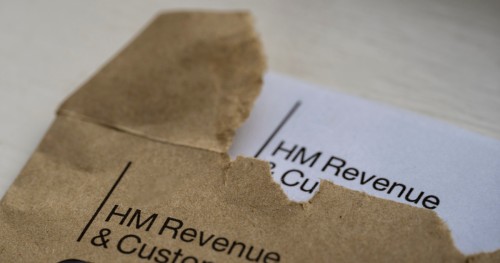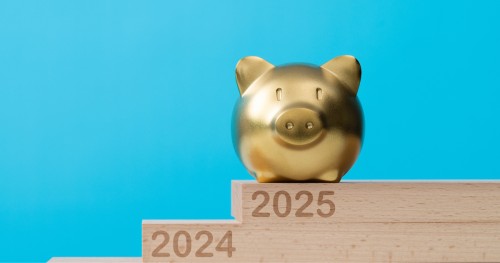Cash flow: a freelancer’s guide to money in and money out

Take your income, minus your costs and you have your profits – cash flow on the other hand is the cash flowing in and out of your self-employed business over a certain period, writes Christian Hickmott, managing director of Integro Accounting.
For any business, particularly micro-businesses like freelancers, cash flow management is paramount -- it’s about the timing of your income and making sure you can cover all outgoings.
Cash is king (and cash flow is your business’s lifeblood)
Here, exclusively for FreelanceUK, I will share some of the advice we give to our self-employed clients, which they've told us helps them gain more visibility, foresight and control of the financial health of their business.
While good profit margins can give you more credibility for borrowing purposes, it’s the cash available in your business now that will pay that dreaded HMRC bill!
Where to start with freelancer cash flow?
Managing your cash flow can be done on a simple spreadsheet.
But you can also use accounting software, such as FreeAgent.
The advantage of software is that it can automatically manage your cash flow for you.
How to approach cash flow in your mind...
Think short, mid and long-term. It’s easier to see what’s right in front of us, but only focusing on the immediate future could lead to problems further down the line. For example, you may be on top of any short term cash flows, but if you aren’t looking ahead you may not realise that the bulk payment on your most important bit of kit is due in 6 weeks’ time -- and you're not going to have the funds to pay it!
We therefore recommend considering short, medium and long-term cash flows, so we have below listed our seven top cash flow tips -- over those timeframes.
7 top cash flow tips
Short term or day-to-day cash flow:
1. Ensure your customers pay promptly
It might sound obvious but until you are paid by your customers you are unlikely to be able to pay your suppliers, let alone take any cash out of the business for your personal expenditure.
Therefore, it is important that you set appropriate credit terms -- in an ideal world this would be immediately! However, in most industries this is not normal practice.
For clients that are consistently late payers or always pay towards the end of the agreed terms, you may wish to consider offering a settlement or ‘early payment discount’ to encourage faster payment.
For example, you could offer your customers a 3% discount on the supply of your goods or services when paid within 7 days, rather than waiting for full payment in 30 days.
For those clients who do still use the full period, don’t be afraid to send a gentle reminder as they near your payment ‘due date.’ Oh, and there’s no need to feel awkward about sending ‘payment overdue’ notices!
2. Utilise your suppliers’ credit and payment terms
Another good way to keep cash in the bank is to make the most of your suppliers’ credit and payment terms. Doing this will give you more time to be paid by your own customers before having to pay your suppliers.
However, it is always worth considering whether there are any discounts available to you for earlier payment to your suppliers. You could look at matching any discounts you offer to your customers to those offered to you by your main suppliers.
3. Hire equipment rather than buying it
If you need a specific piece of equipment for a single project, job or commissions it may be better for your cash flow to look at hiring it -- say for four weeks -- rather than having to pay for the whole item outright.
Renting or leasing might allow you to take on a different type of project without the financial risks involved with owning the equipment.
You may also find that some businesses will allow you to hire equipment with an option to buy the item at the end of the agreement.
Mid-term cash flow:4. Short-term financing
Any machinery or equipment is almost certainly going to dilapidate over time or become obsolete. Therefore, it is important to know not only when you will need to replace it, but how that replacement is going to be financed.
Short-term financing is a good way to spread out the cost of the new machinery, but you must consider whether the additional interest cost outweighs the benefit of delaying the payment.
You may be fortunate enough to get a 0% finance deal. It’s also worth considering whether the replacement item will be more efficient and save you time -- which may well generate more revenue than the interest will cost.
5. Paying HMRC
It is important to be aware of all of your tax liabilities and when they are due for payment to the tax office.
In an ideal world, you will be in a position to be able to set aside amounts in a different bank account to cover the payment of your VAT and other HMRC liabilities. However, this is not always the case and can be a big cause for concern among freelancers.
In fact, although is often overlooked, the self-employed do have options when it comes to paying HMRC. When cash flow is a problem you may be able to set up a Time To Pay (TTP) arrangement with HMRC, under which you get to spread out the payment of your tax liabilities.
TTP is available for almost all taxes so is worth considering. You must remember that the Revenue will charge interest, and HMRC does have strict rules in place during the repayment period. In order to set up the plan, you should call HMRC and explain your situation -- we advise that you do this as early as possible and ideally not after the payment deadline.
Long-term cash flow:6. Hire purchase and lease agreements
For larger items, such as vans, it may be worth looking at a hire purchase agreement to spread the cost over a longer period.
You should also consider whether a lease would work for you -- they can be more expensive but can offer greater flexibility so may be a better option if you only need the item for a certain period or if you know it will be replaced regularly.
7. Debt structure and refinancing
Most businesses are likely to have some form of debt or borrowing and it is vital that this is structured in the best way possible.
In most instances you will need to decide whether you want to reduce your monthly cost or your overall cost. In either case, consider your options and look at whether any debt could be refinanced using lower interest rates or longer terms.
For example, you may currently have a business credit card with a balance that you simply cannot afford to repay in full. In this case, you should consider whether it would be appropriate and beneficial to take out a bank loan at a much lower interest rate to pay off the credit card. This will almost always reduce your monthly and overall repayment, as well as freeing up the credit card to be used for any short-term issues.
Final thought – put a reserve in place
With an overall view of short, mid and long-term cash flow you’ll ensure you’re covering all your bases, and though forward-planning is key, you can’t always predict what’s around the corner, with unexpected costs, late payers or a quiet couple of months. So keeping a reserve sum in your account for the ‘just in case’ is advisable.
If you do find yourself in a worrying position and unable to pay a debt, speak with your supplier(s), bank, HMRC and before all those, your accountant, to see if there’s anything that can be done to help your financial situation.



Comment
Log in or create your account to react to the article.